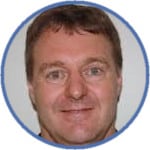Electrolocation And High Tech Lure Gadgets
- Active electrolocation is when fish or other animals create an electric field around their bodies and can detect when the field gets disturbed by an object. Passive electrolocation is the ability to sense the minute electrical impulses in the muscles and organs of prey items and use it to home in on them.
- Devices can be retrofitted on lures to mimic the natural electrical impulses of bait species for the purpose of making them easier for fish to detect.
- Greg hasn’t tested these devices, but has reviewed the available information regarding electrolocation in fish. The recognised electroreceptor organs are Ampullae of Lorenzini and Tuberous electroreceptors. Neither are found on any sportfish in Australia, with the exception of sharks. For electroreception to be beneficial to fish in finding prey some other mechanism for detecting electric field must exist, though none has been described by scientists.
- Despite claims that these devices are scientifically proven, Greg could not locate any credible scientific evidence either that any sportfish can detect electric fields from living prey, or that statistically valid studies of catch rates have been ever been undertaken.
- Give these devices a try, if you like. But based on available evidence is seems unlikely they would be effective on Aussie fish.

Greg "Doc Lures" Vinall
Podcast Host, Lure Maker, Scientist, Educator
Greg is host of the Australian Lure Fishing Podcast. He’s an Aquatic Scientist, Lure Maker, Speaker and Author in the recreational fishing space. In this episode Greg looks for commonalities and trends in the information shared by his many guests on the ALF podcast regarding the best times to fish..

Luv it. More scientific gold – see my comments on the last episode, celebrating the million.